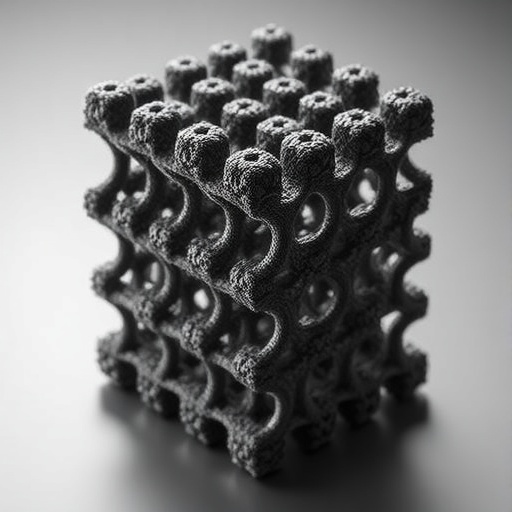
Recent advancements in energy storage technology have set the stage for a new era of efficient and environmentally friendly batteries. At the forefront of this development is a newly published study that delves into the utilization of porous carbon nanofibers as free-standing electrodes specifically designed for zinc-ion hybrid capacitors. This innovative approach has piqued the interest of researchers and industry professionals alike, promising significant improvements in energy density, cycle life, and overall performance.
Zinc-ion hybrid capacitors are recognized for their potential to deliver superior power density with a reduced environmental impact compared to traditional lithium-ion technology. The study conducted by Zheng, Guo, and Liang et al. underscores the importance of materials engineering in redefining energy storage solutions. Their research emphasizes how the unique structural properties of carbon nanofibers can be leveraged to enhance the electrical and electrochemical characteristics of these hybrid devices.
The cornerstone of the study rests on the synthesis of porous carbon nanofibers, which are not only lightweight but also exhibit exceptional conductivity. These properties are vital as they allow for faster charge and discharge cycles, precisely what is needed in a world increasingly reliant on efficient energy systems. The researchers implemented a template-free electrospinning method that ensures uniformity in fiber diameter, which plays a crucial role in optimizing the performance of the electrodes.
.adsslot_kagspzvlcP{width:728px !important;height:90px !important;}
@media(max-width:1199px){ .adsslot_kagspzvlcP{width:468px !important;height:60px !important;}
}
@media(max-width:767px){ .adsslot_kagspzvlcP{width:320px !important;height:50px !important;}
}
ADVERTISEMENT
Upon characterizing the synthesized nanofibers, the team noted an impressive surface area. The high porosity of the carbon structure offers more active sites for electrochemical reactions, significantly enhancing charge storage capabilities. This feature is particularly beneficial in a hybrid capacitor configuration, where the goal is to balance the quick energy delivery of capacitors with the higher energy capacity typically associated with batteries.
This study reveals that the porous carbon nanofibers exhibited remarkable electrochemical performance when integrated into the hybrid capacitor framework. Researchers recorded significant improvements in specific capacitance, which is a measure of the energy storage capabilities of the device. The increased effectiveness of these electrodes highlights their potential in real-world applications, paving the way for next-generation energy systems that are both powerful and efficient.
In their pursuit of further understanding the material properties, the researchers meticulously examined the thermal stability of the carbon nanofibers. Thermal stability is a crucial factor that can affect the longevity and safety of energy storage devices. Tests indicated that the porous carbon nanofibers maintain structural integrity even at elevated temperatures, thus assuring that these materials are suitable for a variety of operating conditions that energy storage devices may face.
The implications of utilizing porous carbon nanofibers extend beyond performance metrics. From an environmental standpoint, zinc-ion batteries are notable for their abundance and low toxicity compared to conventional lithium sources. The research points toward a paradigm shift in how we approach energy materials, advocating for a sustainable path forward in technology that minimizes ecological footprints while maximizing efficiency.
Moreover, this research adds credibility to the growing body of literature advocating for hybrid energy storage systems. As the demand for renewable energy solutions escalates, hybrid capacitors that can deliver both high power and energy densities are essential for the effective integration of renewable energy sources such as solar and wind into the electric grid.
The study conducted by Zheng et al. serves as a critical reminder of the ongoing evolution within battery technology. It bridges the gap between theoretical research and practical applications, emphasizing that progress within materials science can greatly influence energy storage strategies in the coming years. The application of porous carbon nanofibers not only marks a significant achievement in research but also presents a realistic pathway for development in clean energy technologies.
As industries and researchers continue to explore the potential of carbon-based materials, the broader implications of this work could lead to reduced reliance on rare materials and a shift towards more stable alternatives. This aligns well with global trends focused on sustainability and energy efficiency, reflecting an urgent need for innovations that can meet the demands of modern society without compromising environmental integrity.
The future of energy storage is undoubtedly intertwined with breakthroughs like those presented in this study, as researchers and companies alike seek to harness the benefits of silicon-based and carbon nanofiber technologies. The results reported in this investigation reinforce the idea that interdisciplinary collaboration between chemists, material scientists, and engineers will be crucial in driving the development and commercialization of these advanced storage systems.
As we progress into an era characterized by rapid technological advancements and increased energy demands, studies like these pave the way for developing robust energy solutions that are equitable and efficient. The work by Zheng, Guo, and Liang stands as a testament to the potential of porous carbon nanofibers and reaffirms the exciting possibilities that await in the world of energy storage technology.
In conclusion, this groundbreaking study on porous carbon nanofibers as free-standing electrodes for zinc-ion hybrid capacitors enriches the ongoing discourse around innovative energy storage solutions. As researchers build upon these findings, the energy landscape may witness a transformative shift toward more viable, sustainable, and efficient technology that responds to the intricate demands of our modern world.
Subject of Research: Energy storage technology, specifically porous carbon nanofibers in zinc-ion hybrid capacitors.
Article Title: Porous carbon nanofibers as free-standing electrodes for zinc ion hybrid capacitor.
Article References:
Zheng, R., Guo, Y., Liang, L. et al. Porous carbon nanofibers as free-standing electrodes for zinc ion hybrid capacitor. Ionics (2025). https://doi.org/10.1007/s11581-025-06609-2
Image Credits: AI Generated
DOI: https://doi.org/10.1007/s11581-025-06609-2
Keywords: Energy storage, zinc-ion hybrid capacitors, porous carbon nanofibers, electrochemical performance, sustainability.
Tags: cycle life of zinc-ion capacitorselectrical and electrochemical characteristicsenergy storage technology advancementsenvironmentally friendly batteriesfast charge and discharge cyclesfree-standing porous carbon nanofibersimproved energy density in capacitorslightweight conductive materialsmaterials engineering in energy storagesynthesis of carbon nanofiberstemplate-free electrospinning methodzinc-ion hybrid capacitors





